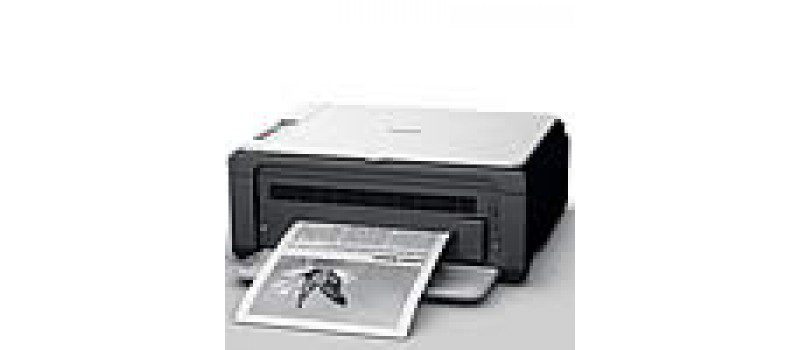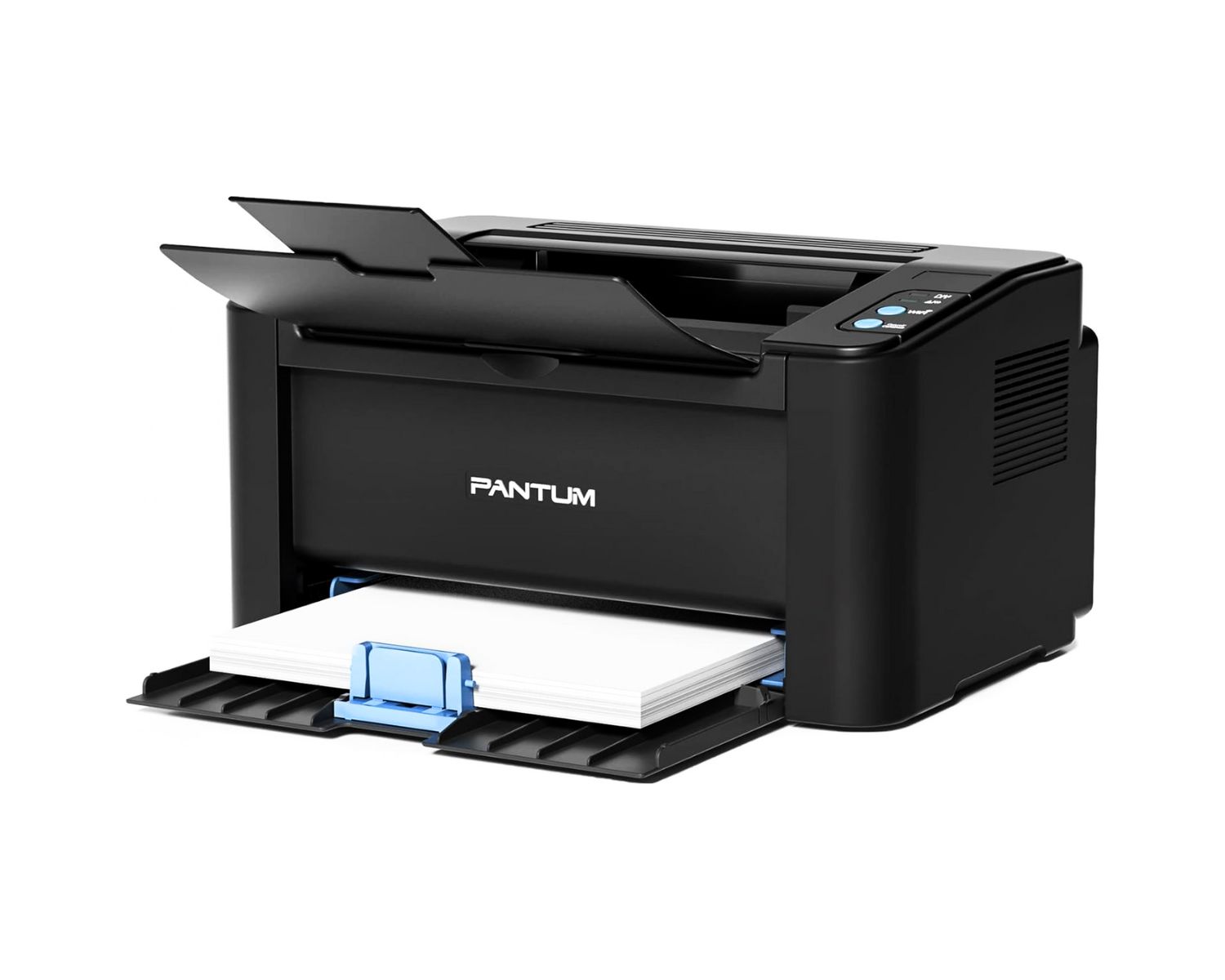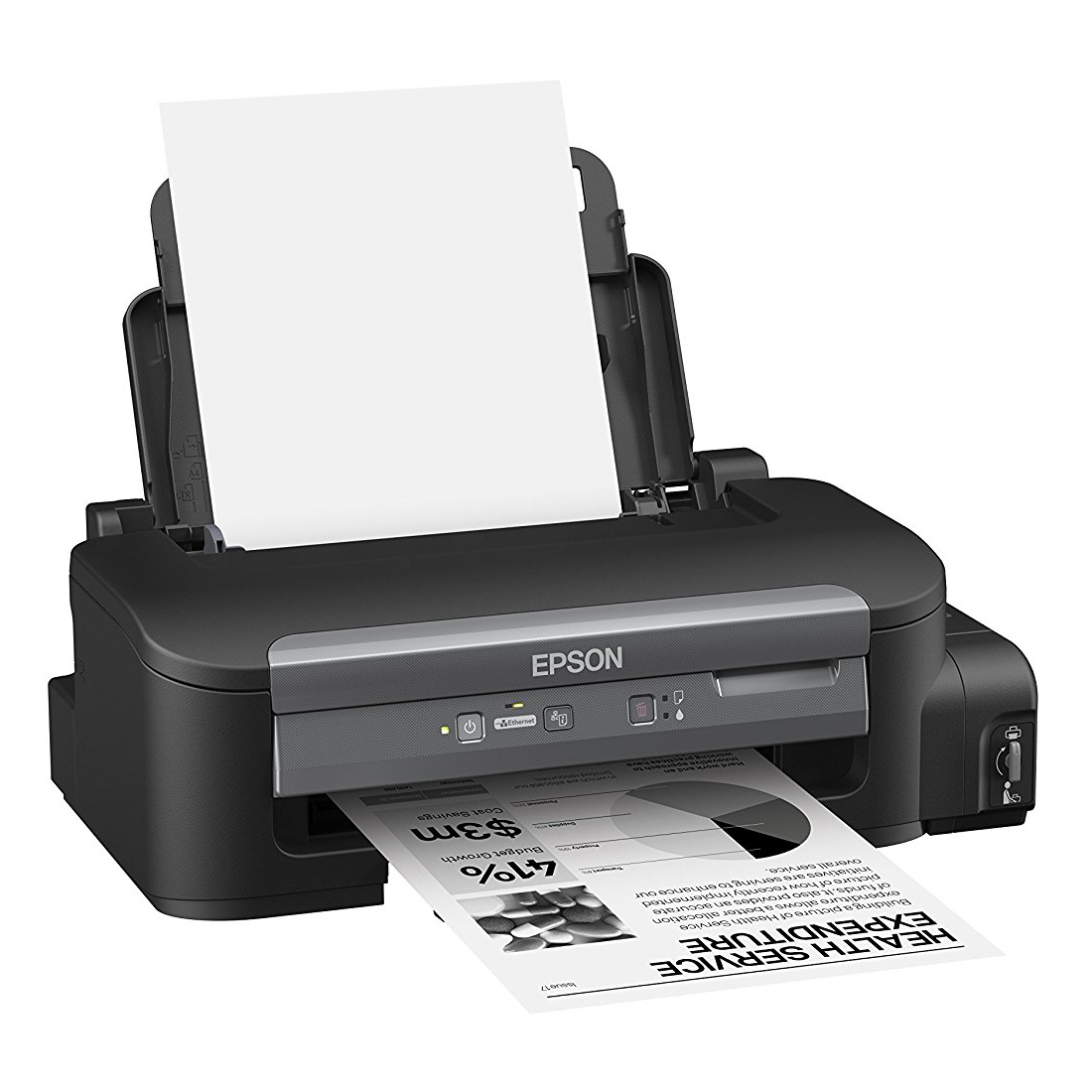What does monochrome printer mean –
What does monochrome printer mean? In a world saturated with vibrant colors, monochrome printing might seem like a relic of the past. However, this simple, black-and-white printing technology remains a crucial tool for businesses and individuals alike. Monochrome printers, known for their efficiency and cost-effectiveness, have been around for decades, constantly evolving to meet the needs of a modern world.
From the early days of typewriters to the high-speed laser printers of today, monochrome printing has played a vital role in communication and information dissemination. We’ll explore the history, advantages, and diverse applications of this essential printing method.
*
Introduction to Monochrome Printing
Monochrome printing refers to the process of printing images or text using only one color, typically black or shades of gray. This is in contrast to color printing, which utilizes a combination of different colors, such as cyan, magenta, yellow, and black (CMYK).The history of monochrome printing dates back to the early days of printing, with the invention of the printing press in the 15th century.
Early printing methods, such as letterpress and lithography, primarily used black ink to produce text and images. Monochrome printing continued to be the dominant form of printing for centuries, with the development of technologies like offset printing further solidifying its role in the printing industry.
Advantages of Monochrome Printing
Monochrome printing offers several advantages over color printing, making it a popular choice for specific applications. The key benefits include:
- Cost-Effectiveness:Monochrome printers and ink cartridges are generally less expensive than their color counterparts. This cost savings can be significant, especially for high-volume printing tasks.
- Speed:Monochrome printers often print faster than color printers, as they only need to process one color. This is particularly beneficial for printing large documents or when speed is a priority.
- Sharpness and Clarity:Monochrome printing can produce exceptionally sharp and clear text and images, making it ideal for documents that require high levels of detail, such as technical drawings, legal documents, and financial reports.
- Professional Appearance:Monochrome printing can create a professional and polished look, especially for business documents and marketing materials. The use of black ink often conveys a sense of formality and sophistication.
- Versatility:Monochrome printing can be used for a wide range of applications, including printing documents, photos, and even artwork. The ability to print in shades of gray allows for creative expression and a unique aesthetic.
Understanding Monochrome Printers

Monochrome printers are specialized devices that produce output in shades of gray, ranging from black to white. These printers are commonly used for tasks where color is not essential, such as printing text documents, invoices, and black and white photographs.
Working Mechanism of Monochrome Printers
Monochrome printers employ various technologies to create images on paper. The core principle involves transferring toner or ink onto the paper through a series of steps. The process begins with the printer receiving data from a computer or other device.
This data is then translated into a pattern of dots, which are then transferred to the printing surface. The printing mechanism varies depending on the type of printer, but the fundamental principle remains the same: to create a pattern of dots that represent the image or text.
Types of Monochrome Printers
Different types of monochrome printers utilize distinct technologies to achieve printing. Here are some of the most common types:
Laser Printers
Laser printers are known for their high-speed printing and sharp, crisp output. They use a laser beam to create an image on a photosensitive drum. Toner powder is then applied to the drum, and the image is transferred to the paper through heat and pressure.
Inkjet Printers
Inkjet printers use tiny nozzles to spray ink onto the paper. These printers are typically less expensive than laser printers, but they may produce lower-quality output. Inkjet printers are often used for home and small office printing.
Dot Matrix Printers
Dot matrix printers are older technology that uses a print head with pins to strike an inked ribbon, creating dots on the paper. These printers are known for their durability and ability to print on a variety of materials, but they are also slower and produce lower-quality output compared to laser and inkjet printers.
A monochrome printer is a simple and reliable option for those who only need to print in black and white. They’re often cheaper than color printers and use less ink, making them a good choice for basic tasks like printing documents or photos in grayscale.
You might wonder, though, what “eighteenth printing” means when you’re looking at a book. Well, what does eighteenth printing mean ? It’s just a way of saying that the book has been reprinted 17 times since it was first published.
So, while monochrome printers are all about simplicity, book printing can be surprisingly complex!
Key Components of a Monochrome Printer, What does monochrome printer mean
Monochrome printers consist of several essential components that work together to produce printed output. These components include:
Print Engine
The print engine is the core of the printer, responsible for transferring the image from the printer’s memory to the paper. The print engine includes the print head, which dispenses the toner or ink, and the imaging drum, which creates the image.
Toner Cartridge or Ink Cartridge
The toner cartridge or ink cartridge contains the printing material. Toner is a fine powder that is fused to the paper with heat, while ink is a liquid that is sprayed onto the paper.
Paper Tray
The paper tray holds the paper that will be printed. The paper tray can hold a variety of paper sizes and weights.
Control Panel
The control panel allows the user to interact with the printer. The control panel typically includes buttons for starting and stopping printing, selecting paper size and type, and adjusting settings.
Processor and Memory
The processor and memory are responsible for processing the printing data and storing the printer’s settings.
Applications of Monochrome Printing

Monochrome printing, despite its simplicity, plays a crucial role in various industries and everyday life. Its cost-effectiveness and efficiency make it an ideal choice for numerous applications, ranging from basic document printing to specialized uses in specific sectors.
Uses in Different Industries
Monochrome printing finds wide applications across various industries, contributing to efficiency and cost savings.
- Office Environments:Monochrome printers are essential for everyday office tasks, including printing documents, reports, invoices, and internal communications. Their reliability and affordability make them a cost-effective solution for high-volume printing needs.
- Education:Schools and universities rely heavily on monochrome printers for student assignments, course materials, and research papers. Their ability to handle large print volumes at a reasonable cost makes them an ideal choice for educational institutions.
- Healthcare:Monochrome printers are used in healthcare settings for printing patient records, medical reports, prescriptions, and other essential documents. Their ability to produce clear and legible text ensures accurate information transfer.
- Manufacturing:Monochrome printers are used in manufacturing for printing labels, barcodes, and technical drawings. Their high-resolution output and durability make them suitable for industrial applications.
- Retail:Monochrome printers are used in retail for printing receipts, price tags, and promotional materials. Their speed and reliability ensure efficient customer service and accurate pricing information.
Examples of Monochrome Printing in Different Applications
Monochrome printing is used in a wide range of applications, showcasing its versatility and cost-effectiveness.
- Documents:Monochrome printing is the standard for printing documents, reports, and other textual content. Its focus on text clarity and efficiency makes it ideal for everyday document printing.
- Photos:While monochrome printing is not typically used for high-quality color photos, it can effectively reproduce black and white images, offering a classic and artistic aesthetic.
- Artwork:Monochrome printing is used for creating prints of black and white artwork, such as drawings, sketches, and photographs. Its ability to capture subtle shades of gray makes it a valuable tool for artists.
- Labels:Monochrome printers are used for printing labels for products, packages, and shipping materials. Their high-resolution output ensures clear and legible text for easy identification.
- Barcodes:Monochrome printers are essential for printing barcodes, used for inventory management, product tracking, and other applications. Their ability to print sharp and accurate barcodes ensures efficient scanning and data processing.
Benefits of Monochrome Printing
Monochrome printing offers several benefits, making it a popular choice for various applications.
| Benefit | Description |
|---|---|
| Cost-effectiveness | Monochrome printers are generally cheaper to purchase and operate than color printers, making them a budget-friendly option for high-volume printing needs. |
| Reliability | Monochrome printers are known for their reliability and durability, making them suitable for heavy-duty use in office and industrial settings. |
| Speed | Monochrome printers can print documents quickly, reducing waiting time and improving productivity. |
| Clear Text Reproduction | Monochrome printers excel at reproducing sharp and legible text, ensuring clear and accurate information transfer. |
| Low Maintenance | Monochrome printers typically require less maintenance than color printers, reducing downtime and operating costs. |
Advantages and Disadvantages of Monochrome Printing: What Does Monochrome Printer Mean

Monochrome printing, while seemingly simple, offers several advantages over color printing in specific scenarios. However, it also has limitations that make it unsuitable for certain applications. Understanding these pros and cons can help you make an informed decision about whether monochrome printing is right for your needs.
Advantages of Monochrome Printing
Monochrome printing offers several advantages over color printing, particularly in cost-effectiveness and efficiency.
- Lower Printing Costs:Monochrome printers and cartridges are significantly cheaper than their color counterparts. This cost savings can be substantial, especially for high-volume printing.
- Faster Printing Speeds:Monochrome printers generally print faster than color printers because they only have to deal with one ink color. This can be a significant advantage in situations where speed is critical, such as printing large documents or multiple copies.
- Less Maintenance:Monochrome printers require less maintenance than color printers. They have fewer moving parts and are less prone to clogging.
- Longer Cartridge Lifespan:Monochrome ink cartridges typically last longer than color cartridges, as they only contain one color. This means fewer replacements and less downtime.
- Ideal for Text-Heavy Documents:Monochrome printing is perfect for documents that primarily consist of text, such as reports, invoices, and legal documents. The lack of color doesn’t detract from the readability of the content.
Disadvantages of Monochrome Printing
While monochrome printing offers several advantages, it also has limitations that make it unsuitable for certain applications.
- Limited Color Options:The most obvious disadvantage of monochrome printing is the lack of color. This can be a significant limitation for documents that require visual appeal, such as marketing materials, presentations, or photographs.
- Less Versatility:Monochrome printers are not as versatile as color printers. They cannot be used for printing color photos, graphics, or other documents that require color.
- May Not Be Suitable for All Applications:Monochrome printing is not suitable for all applications. For example, it may not be appropriate for printing documents that require fine detail or high-resolution images.
Comparison of Monochrome and Color Printing
The following table provides a side-by-side comparison of the pros and cons of monochrome and color printing:
| Feature | Monochrome Printing | Color Printing |
|---|---|---|
| Cost | Lower | Higher |
| Printing Speed | Faster | Slower |
| Maintenance | Less | More |
| Cartridge Lifespan | Longer | Shorter |
| Color Options | Limited | Wide range |
| Versatility | Less | More |
Choosing a Monochrome Printer

Selecting the right monochrome printer can be a daunting task given the vast array of options available. But don’t worry, we’ll guide you through the process, helping you make an informed decision that aligns with your specific needs and budget.
Factors to Consider When Selecting a Monochrome Printer
When choosing a monochrome printer, there are several factors to consider. These factors will help you narrow down your options and select a printer that meets your specific requirements.
- Printing Volume:How many pages do you plan to print on a regular basis? If you print a large number of pages, you’ll need a printer that can handle the workload without breaking down. For high-volume printing, consider laser printers, as they are designed for heavy-duty use.
- Print Speed:If you need to print documents quickly, you’ll want a printer with a fast print speed. Laser printers typically have faster print speeds than inkjet printers. Check the printer’s specifications to see how many pages per minute (ppm) it can print.
- Print Quality:The quality of the print output is crucial for certain applications. For professional documents or presentations, you’ll want a printer that produces high-quality prints with sharp text and clear images. Laser printers generally offer better print quality than inkjet printers, especially for text-heavy documents.
- Connectivity:Consider how you’ll connect the printer to your computer or network. Most printers offer USB connectivity, while some also have Wi-Fi or Ethernet capabilities. Choose a printer with the connectivity options that best suit your setup.
- Paper Handling:How much paper do you need to load at once? Some printers have a large paper tray capacity, while others have smaller trays. Consider the amount of paper you typically use and choose a printer with the appropriate paper handling capacity.
- Cost Per Page:The cost per page is an important factor to consider, especially if you print a large volume of pages. Laser printers generally have lower cost per page than inkjet printers, but the initial cost of the printer is usually higher.
Calculate the total cost of ownership, including the printer’s price, toner cost, and maintenance costs.
- Features:Some printers offer additional features like automatic document feeder (ADF), duplex printing (printing on both sides of the paper), and mobile printing capabilities. These features can enhance your printing experience and make it more efficient.
Guidelines for Choosing the Right Monochrome Printer Based on Specific Needs
Here are some guidelines for choosing the right monochrome printer based on your specific needs:
- For Home Users:If you print occasionally and primarily for personal documents, an inkjet printer may be a suitable option. They are generally more affordable than laser printers, but the cost per page can be higher.
- For Small Businesses:Small businesses that print a moderate volume of documents, such as invoices, letters, and reports, may benefit from a laser printer. Laser printers offer faster print speeds, better print quality, and lower cost per page in the long run.
- For High-Volume Printing:For organizations that print a large volume of documents, such as offices, schools, and printing houses, a high-volume laser printer is the best choice. These printers are designed for heavy-duty use and offer high print speeds, high paper capacity, and lower cost per page.
Comparing Different Monochrome Printer Models
When comparing different monochrome printer models, consider the following factors:
- Print Speed:Compare the print speed of different models in pages per minute (ppm). Higher ppm indicates faster printing.
- Print Quality:Look at the print resolution, which is measured in dots per inch (dpi). Higher dpi indicates sharper text and clearer images.
- Paper Handling:Compare the paper tray capacity, automatic document feeder (ADF) capacity, and duplex printing capabilities.
- Connectivity:Check the connectivity options, such as USB, Wi-Fi, and Ethernet.
- Cost Per Page:Compare the cost of toner cartridges and calculate the total cost of ownership.
- Features:Compare the additional features, such as mobile printing, automatic document feeder, and duplex printing.
- Warranty:Check the warranty period and coverage offered by the manufacturer.
FAQ
What are the main types of monochrome printers?
The two most common types are laser printers and inkjet printers. Laser printers are known for their speed and high-quality output, while inkjet printers are more affordable and suitable for occasional use.
Are monochrome printers still relevant in the digital age?
Absolutely! While digital documents and online communication are prevalent, monochrome printing remains essential for tasks like printing contracts, legal documents, and high-volume reports.
What are the environmental benefits of monochrome printing?
Monochrome printing often uses less ink and energy than color printing, contributing to a smaller carbon footprint. Many monochrome printers also have eco-friendly features like automatic duplex printing and energy-saving modes.
-*

